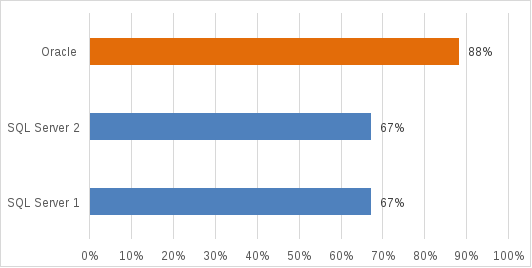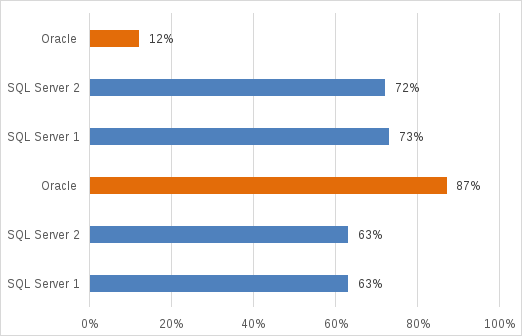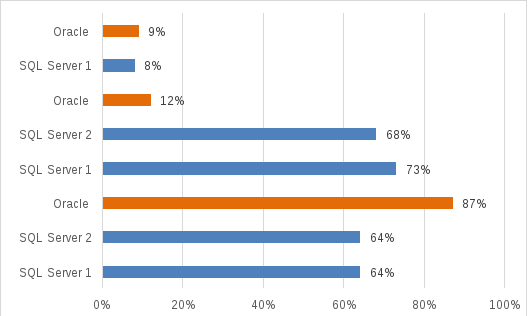Home > Workload Solutions > SQL Server > Guides > Reference Architecture Guide—Consolidate and Simplify Mixed Database Workloads > Average CPU utilization
Average CPU utilization
-
The OLTP use case test demonstrates two SQL Server databases and one Oracle database running on the system with no other workloads. This is the baseline test, and we use the results to understand if average CPU utilization on the MX840c servers is affected when the computational load increases in the subsequent tests. We gathered the average CPU utilization metrics using Linux dstat. Each SQL Server VM had a reservation of 6 vCPUs and the Oracle VM had a reservation of 10 vCPUs. The following figure shows the average CPU utilization:

Figure 3. Average CPU utilization during OLTP use case test

The DSS use case test adds a workload to the system that scans large datasets using complex queries to provide business analytical reports. Each DSS SQL Server VM had a reservation of 8 vCPUs and the Oracle VM had a reservation of 8 vCPUs. The following figure shows the average CPU utilization for the OLTP and DSS workloads:Figure 4. Average CPU utilization for two use cases
In the snapshot OLTP use case test, we created PowerMax SnapVX snapshots and repurposed copies of our production OLTP databases for a light OLTP workload. The snapshot SQL Server VM had a reservation of 4 vCPUs, and the snapshot Oracle VM had a reservation of 6 vCPUs.

Figure 5. Average CPU utilization across all three use cases
Workload increases had minor impact on the CPU utilization. For example, in the baseline OLTP use case test, the SQL Server database’s average CPU utilization was 67 percent (see Figure 3). With all three workload use cases (OLTP, DSS, and snapshot OLTP) running in parallel, the average CPU utilization was only 64 percent, as shown in Figure 5, with a minimal impact of 3 percentage points. This CPU utilization reduction occurred due to the reduction in IOPS handling in the mixed workload case, as compared to that in the baseline case. Minor changes in CPU utilization despite workload additions prove that the mixed workload system delivers consistent performance.
